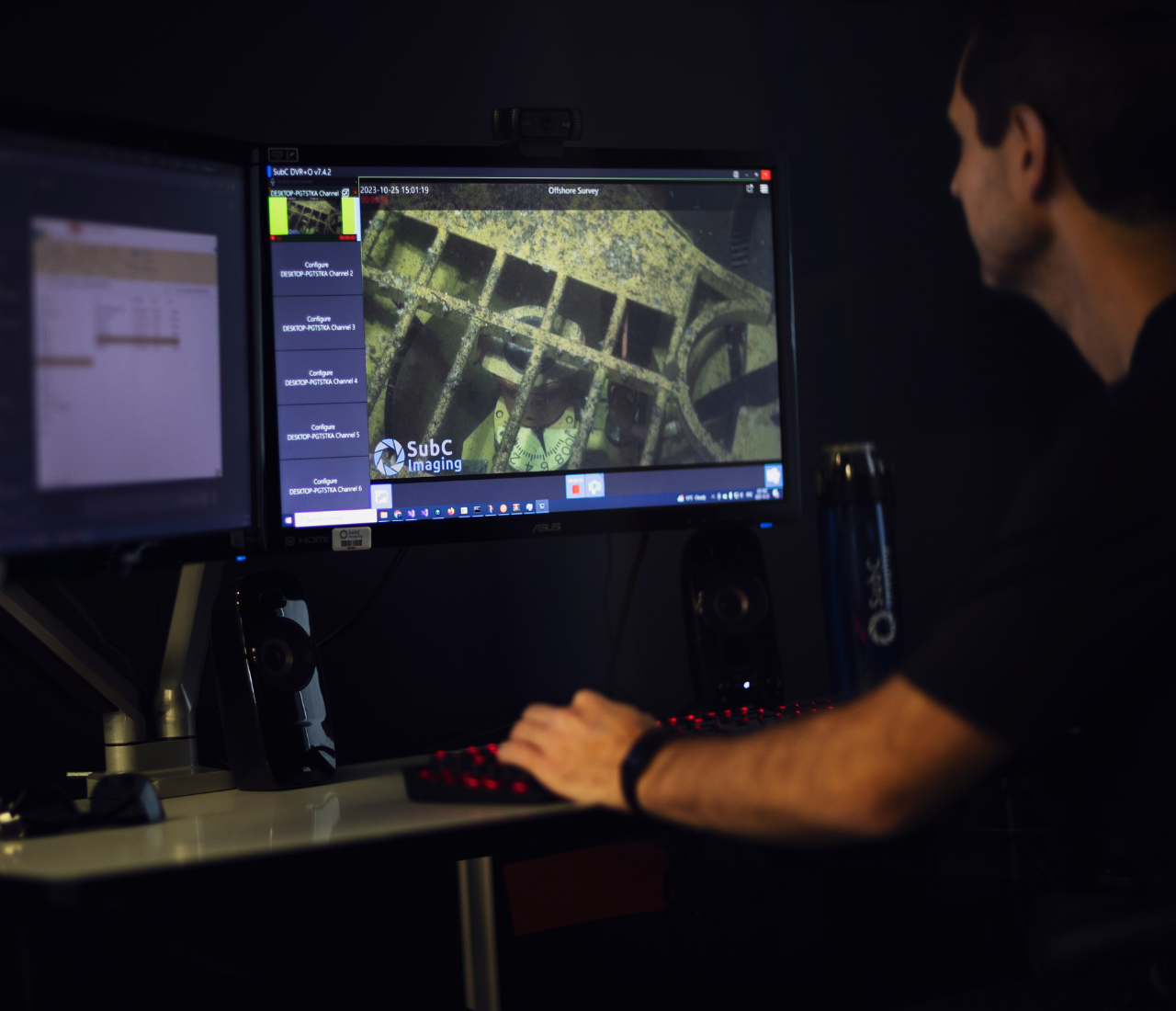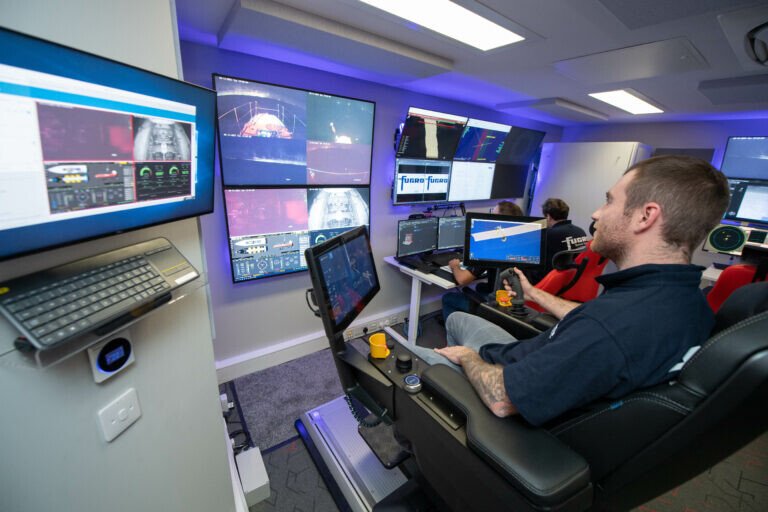Top 5 Factors That Affect Real-Time Streaming Latency Underwater
The speed of your video feed can be just as important as its clarity when piloting an ROV or monitoring live subsea footage. A delay between what’s happening underwater and what appears on the operator’s screen — known as latency — can affect decision-making, slow down inspections, and reduce precision during critical operations.
In offshore energy projects, especially pipeline inspections, asset integrity surveys, and remote piloting, low-latency subsea video streaming is more than a convenience. It’s a key operational requirement. Delays of even a second can make it harder to maneuver an ROV precisely, cause operators to overshoot inspection targets, or slow responses to unexpected situations.
In this article, you’ll learn the top five factors that cause latency in subsea video streaming and practical steps to reduce delays during offshore inspections and remote ROV piloting.
Understanding Video Latency in Subsea Operations
Before looking at what causes delays, it’s important to define what latency actually means in this context. Latency in subsea streaming is often measured as glass-to-glass latency: the time from when an image is captured by the camera lens to when it is displayed on the operator’s screen. This includes every stage in the chain, including image capture, processing, compression, transmission, and display.
For most offshore operations, keeping latency under one second is ideal for maintaining real-time control and situational awareness. Beyond that, the lag becomes noticeable, and operators may have to slow their movements or repeat passes to get usable inspection data.
Key Factors That Cause Latency in Subsea Real-Time Streaming
Whether you’re remotely piloting an ROV, inspecting subsea pipelines, or streaming live footage from an autonomous system, latency can be the difference between smooth operations and frustrating delays. Knowing what causes it is the first step to keeping it low.
While every subsea project is different, these are the five most common factors that influence real-time streaming performance and what you can do about them.
1. Bandwidth Availability and Stability in Offshore Latency
Bandwidth is the capacity of a network to carry data. Offshore, bandwidth is often limited and shared between multiple systems such as vessel navigation, crew communications, control software, and live video.
If bandwidth is low or unstable, video data may be queued for transmission or compressed more aggressively, increasing subsea video latency. For example, during a pipeline inspection streamed over a shared satellite link, a sudden bandwidth drop could cause visible stuttering in the feed, forcing the operator to pause while the video catches up.
Tip: Allocating dedicated bandwidth for video streaming can significantly improve performance. Systems that automatically adjust bitrate to current network conditions can also help maintain smooth, real-time ROV streaming.
2. Video Compression and Encoding Methods
Video compression reduces the amount of data sent over the network, making it possible to transmit high-resolution footage over limited bandwidth. But compression takes processing time, and heavier compression can strip away fine details critical for inspection work.
The trade-off is straightforward:
Higher compression: Lower latency, smaller files, but less image detail.
Lower compression: Better image quality, but higher bandwidth requirements and potential delay.
In a real-world offshore scenario, a team conducting an inspection in poor visibility may choose lighter compression to preserve detail, even if it increases remote piloting ROV latency slightly, because the ability to see small cracks or corrosion outweighs the delay.
Tip: Look for systems that let you adjust compression settings on the fly so you can balance latency and image quality as conditions change.
3. Processing Power and System Architecture for Low-Latency Video
Before a video can be sent over a network, it has to be processed and encoded. The speed of the hardware and efficiency of the software in the camera, recorder, or streaming unit directly impact latency.
Older processors, inefficient encoding pipelines, or software that isn’t optimized for real-time performance can add hundreds of milliseconds to each frame. In contrast, a low-latency underwater camera, like the Rayfin, designed with fast, purpose-built processing, can encode and transmit video almost instantly.
Tip: Check whether your streaming hardware is optimized for live encoding. General-purpose computing devices may work, but they often introduce more delay than dedicated video hardware.
4. Transmission Distance and Network Path
Signals take time to travel. The longer the distance, the greater the delay. Long fiber runs, multiple network hops, and satellite links can each add latency.
For example, a geostationary satellite link inherently adds about 500–600 milliseconds of delay simply due to the distance the signal must travel to space and back. This means that even the most optimized system will have at least that much latency before any processing or compression is considered.
Tip: Whenever possible, minimize unnecessary network hops and choose lower-latency transmission paths. For remote operations, consider the trade-offs between different satellite services. Low-Earth orbit (LEO) systems can offer lower latency than traditional geostationary satellites.
5. Environmental and Operational Conditions
Environmental factors can indirectly affect latency. Rough seas, heavy rain, or interference from other equipment can disrupt network stability, causing packet loss and forcing the system to buffer or resend data.
Imagine conducting a subsea inspection during a storm: high vessel motion could cause momentary loss of alignment for a satellite dish, leading to sudden spikes in subsea video latency.
Tip: Use equipment designed for stability in challenging offshore conditions, with error correction and buffering strategies that minimize visible disruption without introducing unnecessary delay.
How to Measure and Reduce Subsea Video Latency
Photo credit: Fugro
Latency is best measured under real-world operating conditions. A common method is to place a visible time source (like a digital clock) in front of the camera and measure the delay between the live view and the streamed view on the operator’s monitor.
Ways to reduce latency:
Allocate dedicated bandwidth to video streams.
Adjust compression settings to match bandwidth availability and inspection needs.
Use hardware and software optimized for live streaming.
Reduce the number of network hops in the signal path.
Test equipment before deployment to confirm performance expectations.
How SubC Imaging Minimizes Real-Time Streaming Latency
SubC Imaging’s real-time streaming can be deployed as its own system or built into the Rayfin camera, DVR+ Overlay, and Blackbox. In every case, operators can enable or disable streaming with a simple toggle, avoiding complex reconfiguration.
To address the main causes of subsea video latency, the system combines efficient video processing, adaptive compression, and optimized network handling. It delivers one second or less latency, even over VSAT satellite links, by processing and encoding video in real time, then adjusting stream settings to match available bandwidth without losing critical detail.
The software-based setup works with a wide range of cameras and DVRs, supporting SD to 4K resolutions over composite, SDI, or HDMI. Multi-viewer access and two-way audio allow teams and clients to participate in inspections from anywhere, while optional real-time data synchronization integrates sensor feeds like CTD, depth, and GPS alongside the video.
This approach allows offshore teams to conduct remote inspections, pilot ROVs or USVs, and share live results without sacrificing responsiveness or image quality.
Conclusion: Improving Offshore Inspections with Low-Latency Video
Low latency gives offshore teams a sharper, more responsive view of subsea operations. It improves operator control, reduces vessel time, and helps ensure that inspections are both accurate and efficient.
By understanding the factors that influence low latency subsea video streaming, operators can make informed choices that improve safety, efficiency, and inspection quality, no matter where the work takes place.
See how real-time streaming can improve your offshore inspections. Contact our team to discuss your project.




